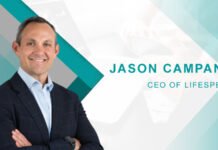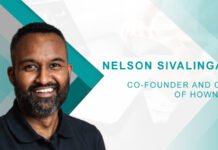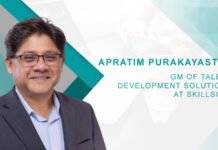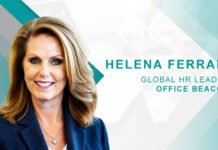To start, can you please tell us about your professional journey and what led you to co-found Inclusively?
Inclusively started as a hiring platform for people with disabilities, using AI to help job seekers identify what Success Enablers are needed to be successful in a role and enabling companies to find qualified talent that was historically screened out.
We have since expanded with our workplace management platform, Retain, that addresses the increasing demand for personalization in the employee experience space. A significant proportion of employees in the workforce have unmet needs related to a disability. Retain is designed to respond to the evolving needs of your workforce. It enables companies to address the individual needs of its employees by enabling them to quickly find relevant Success Enablers and benefits offered by your company. Employers utilize this real-time data to better understand your workforce.
A large factor that drove me to co-found Inclusively is when my cousin became the first licensed facial specialist in Florida with Down syndrome, turning her lifelong passion for beauty into a career. It was this that made me realize there needs to be more opportunities for people to have an equal opportunity to learn in ways that’s best for them, land meaningful work, and access necessary accommodations so they can show up as their best selves.
What’s at stake for employers when their workforce misses out on the benefits and resources they need?
The stakes are incredibly high. According to our recent Workforce Support Survey, only 11% of employees find company resources well-aligned with their actual needs. Companies are literally investing millions in benefits that remain underutilized because employees can’t find or access them.
Beyond the wasted investment, there’s a significant productivity drain. 64% of employees waste between 30 minutes and multiple days searching for resources. We’re talking about thousands of cumulative productivity hours lost annually to inefficient resource access.
But the biggest stake is talent retention. 64% of employees would be more likely to stay if their resource needs were better met. When you consider that preventable turnover costs organizations 1.5-2x salary per departure, this becomes a board-level issue.
Why do you think so many of today’s workers feel their needs aren’t being fully met by their employers?
It’s a systems problem, not a resources problem. Companies have the resources – they’re just buried in fragmented technology stacks where employees can’t find them.
Look at the data: 49% of employees bypass technology solutions to contact HR directly. That tells us the technology isn’t serving their needs. Our survey found that work-life balance and mental health support – the resources cited as most important – are actually the hardest to locate.
The traditional approach of building separate systems for accommodations, benefits, ERGs, and other resources creates these silos. Each team is doing important work, but without coordination, the employee experience suffers. Only 38% of employees believe their company’s investments are fully accessible to them.
Can you explain what resource misalignment looks like in the workplace and how it affects both retention and productivity?
Resource misalignment happens when there’s a disconnect between what companies provide and how employees experience accessing those resources. When employees spend days searching for support they need, that’s misalignment. When only 3-5% of employees disclose accommodation needs (the industry average) despite much higher actual need, that’s misalignment.
The effects ripple through the entire organization. First, there’s the productivity impact – hours wasted searching through multiple systems. Then there’s the adoption barrier – 36% report that system complexity directly hampers adoption of AI and other advanced technologies companies are investing in.
Most critically, it creates a retention crisis. When employees don’t feel supported, they leave. Our case study with Salesforce showed that when we made their resources more accessible, 53% of employees selected Success Enablers when the process was made anonymous – far above that 3-5% industry average.
In your view, how are retention and productivity challenges evolving in today’s workforce landscape?
These challenges have fundamentally transformed in the past few years. Companies used to think retention was primarily about compensation and career growth. Now we understand it’s equally about whether employees can access the support they need to do their jobs well because the data tell us HR leaders and accessibility teams are overwhelmed too.
Another trend is the shift in the productivity landscape. Employees aren’t just losing time to inefficient processes, they’re struggling to adopt the very technologies meant to make them more productive. We’re seeing this 36% adoption barrier across industries.
How do these challenges create new pressures or responsibilities for today’s leadership teams?
Leadership teams are now expected to create seamless, personalized experiences for employees across increasingly complex organizations. Specifically, for accessibility and accommodation leaders, there’s pressure to support 100% of employees rather than just the 3-5% who disclose a need. For HR transformation leaders, they’re being asked to coordinate disparate systems while also improving poor employee feedback.
What we’re seeing is that leaders must now deeply understand the whole ecosystem of employee support – from benefits to accommodations to ERG resources – rather than just their specific domain. This requires new skills and new approaches to cross-functional collaboration.
What can employers do right now to better align their benefits and workplace policies with the needs of a diverse, modern workforce?
The first step is understanding the current state. Companies need to audit all their employee resources and map the complete employee journey for accessing support. Most are shocked to discover just how fragmented their systems are.
Next, create a unified framework. That doesn’t mean replacing all your systems – it means providing a single front door for employees to access everything they need. Our Success Enablement Framework allows companies to leverage existing resources and infrastructure while creating a seamless experience.
Make it anonymous. We’ve seen dramatic increases in utilization when employees can search for resources without disclosing their specific needs.
Finally, implement real-time feedback mechanisms. Our platform provides analytics on resource effectiveness, ease of use, and impact on productivity. This allows companies to continuously improve their offerings based on actual employee experiences.
On a personal note, how do you approach leading a mission-driven company while staying agile in a constantly changing business environment?
I believe agility comes from staying laser focused on your core mission while constantly learning from customers. For us, every conversation with a customer like Salesforce, WPP or Novartis is an opportunity to deepen our understanding of the problem we’re solving.
We’ve had to evolve our approach multiple times. Initially, many of our conversations started with accessibility teams, but we quickly learned that employee experience and HR transformation leaders were equally important stakeholders. Understanding these different buyer personas has been critical to our success.
We’ve also been intentional about building a diverse team that reflects the communities we serve. This diversity of perspective helps us stay agile and responsive to the changing needs of workers and workplaces.
What advice would you give to HR leaders or executives who are trying to rethink their approach to employee support and engagement?
Start with understanding the true employee experience. Not what you think it is, but what it actually is. The gap between the two is usually shocking.
Focus on reducing friction rather than adding new benefits. Our data shows that 64% of employees waste significant time searching for resources that already exist. Solving this core problem often delivers more value than adding new programs.
Prioritize standardization. Companies like Salesforce and Novartis initially came to us to solve very specific problems, but quickly realized the value of standardizing processes globally. This creates consistency while allowing for personalization.
Finally, leverage technology that puts the employee at the center. Your employees know what they need – give them the tools to find it themselves rather than forcing them to navigate complex organizational structures to get support.
Finally, any closing thoughts on where you see the future of inclusive workforce strategies heading and what employers should be prioritizing?
The future of inclusive workforce strategies is personalized, proactive, and powered by intelligent technology. We’re moving from a world where accommodations and support were available by request to one where personalized resources are proactively suggested based on an individual’s unique circumstances.
Companies should be prioritizing technologies that adapt to the employee rather than forcing employees to adapt to rigid systems. The days of one-size-fits-all workplace policies are ending.
I see a future where workplace inclusion isn’t a separate initiative but is fully integrated into every aspect of the employee experience. This isn’t just the right thing to do – it’s a competitive advantage. Companies that can attract, support, and retain diverse talent will outperform their peers.
Ultimately, the companies that will win the talent war are those that can demonstrate they understand and support the full spectrum of employee needs – not just through words, but through seamless experiences that actually deliver on that promise.
Explore HRtech News for the Latest Tech Trends in Human Resources Technology

Charlotte Dales ,Co-Founder and CEO of Inclusively
Charlotte Dales is the Co-founder and CEO of Inclusively, a workforce inclusion platform helping employers attract and retain talent through accommodations insights, training, and support. Inspired by her cousin Cameron – the first aesthetician in Florida with Down syndrome – Charlotte launched Inclusively to scale disability employment success stories.
About Inclusively: Inclusively’s technology platform helps organizations create personalized employee experiences by connecting individuals to Success Enablers – resources, benefits, and accommodations – while maintaining privacy and allowing employees to find individualized support. The platform provides employers with actionable data on resource utilization and gaps. The technology streamlines fragmented systems, improves employee productivity through better resource access and delivers ROI insights that help companies make data-driven decisions about their investments in employee wellbeing. A few of Inclusively’s valued clients include Delta Air Lines, Lyft, Accenture, Applied Systems, Discord, UL Solutions, RAPP and WellLife Network.












